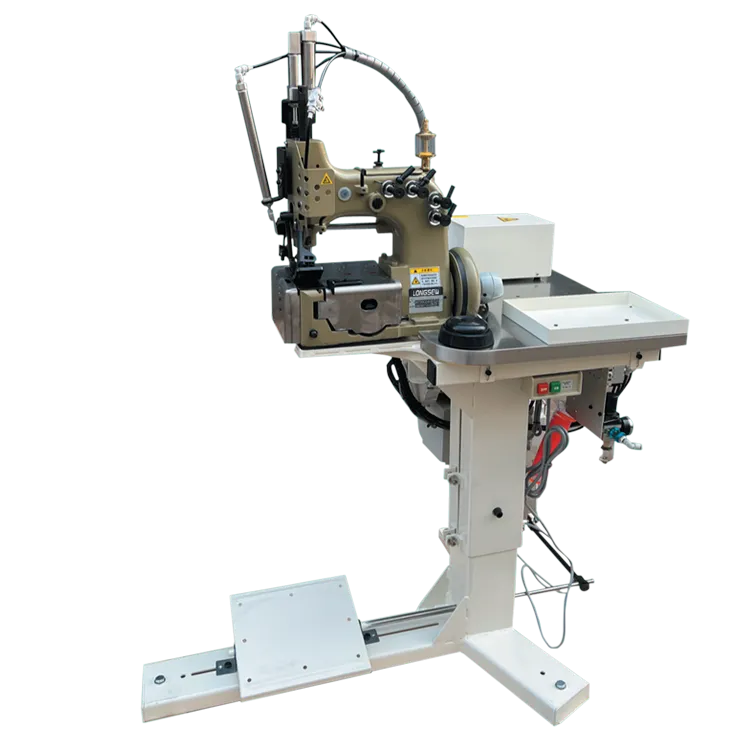what does a overlocker do
What Does an Overlocker Do?
An overlocker, also known as a serger, is a specialized sewing machine that plays a crucial role in the world of garment making and textile finishing. Unlike a traditional sewing machine, which stitches two pieces of fabric together, an overlocker is designed to sew, trim, and finish edges in one swift operation. This unique capability makes it an essential tool for many sewing enthusiasts and professionals alike.
The Core Functionality
The primary purpose of an overlocker is to create clean, professional-looking seams and edges on fabric. It accomplishes this through a combination of techniques, utilizing multiple threads and a fast operation speed. Most overlockers typically use three or four threads, allowing them to create different stitch types suited for various fabrics and applications.
When an overlocker stitches, it not only joins fabric pieces but also trims excess fabric at the edges simultaneously. This trimming feature is vital for preventing fraying and unraveling, which often occurs with raw fabric edges. As a result, the seams are not only strong but also aesthetically pleasing, contributing to a polished finish.
Types of Stitches
One of the standout features of an overlocker is the range of stitches it can produce. Some of the common types of stitches include
1. Overlock Stitch This is the most basic stitch that combines stitching and trimming in one pass. It is ideal for knit fabrics, ensuring that the seams stretch with the garment without breaking.
2. Flatlock Stitch This stitch lays flat against the fabric, making it perfect for hems or seam allowances that need to be less bulky, such as in sportswear.
3. Rolled Hem With a rolled hem stitch, the fabric edge is rolled and stitched simultaneously. This technique is often used on lightweight materials like chiffon or silk to create a delicate, narrow finish.
4. Safety Stitch This stitch combines a standard straight stitch with an overlock stitch, providing strength and prevent fraying. It is commonly used in seams that require extra durability.
what does a overlocker do

Versatility and Applications
Overlockers are incredibly versatile and can be used for various sewing projects, from clothing to home decor. Some of the primary applications include
- Garment Construction For fashion designers and tailors, using an overlocker significantly speeds up the process of garment assembly while ensuring sturdy construction. It is particularly favored for sewing knit and stretch fabrics, which can be challenging with a regular sewing machine.
- Finishing Edges The overlocker excels at finishing hem edges, cuffs, and necklines. This finishing step is essential for both visual appeal and durability.
- Quilting and Crafting While primarily geared toward garment sewing, an overlocker can also be used in quilting to achieve clean, finished seams.
- Making Accessories From bags to home decor items, an overlocker is a handy tool for creating various accessories that require a neat, professional finish.
Operating an Overlocker
While using an overlocker may seem straightforward, it requires a bit of practice to master. Threading an overlocker can be more complex than threading a traditional sewing machine due to its multiple threads and tension settings. However, once you understand the setup, the machine operates quickly and efficiently. Many modern overlockers also feature automatic threading systems and powerful features like differential feed, which helps in managing fabric feeding for even seams.
Conclusion
In summary, an overlocker is an invaluable addition to any sewing toolkit. It not only enhances the efficiency of sewing projects but also elevates the quality of the finished product. Whether you are a novice tailor or an experienced seamstress, mastering the use of an overlocker will open up a new world of possibilities in your sewing journey. From achieving professional seams to experimenting with various stitch types, an overlocker brings a level of precision and flair to your creations that is hard to replicate with standard sewing machines. Investing in an overlocker can significantly improve your sewing skills and the overall quality of your projects, making it a worthwhile investment for anyone passionate about fabric and design.
-
Heavy Duty Leather Sewing Machine: A Must-Have for Professional LeatherworkNewsMay.28,2025
-
Leather Sewing Machine: Essential for High-Quality LeathercraftNewsMay.28,2025
-
Extra Heavy Duty Sewing Machine for Premium Leather ApplicationsNewsMay.28,2025
-
Walking Foot Cylinder Arm Sewing Machine: Precision and Power CombinedNewsMay.28,2025
-
Industrial Cylinder Arm Sewing Machine: Engineered for High-Performance StitchingNewsMay.28,2025
-
Cylinder Bed Sewing Machine: A Powerful Solution for Precision StitchingNewsMay.28,2025
-
Zigzag Sewing MachineNewsMay.12,2025





























